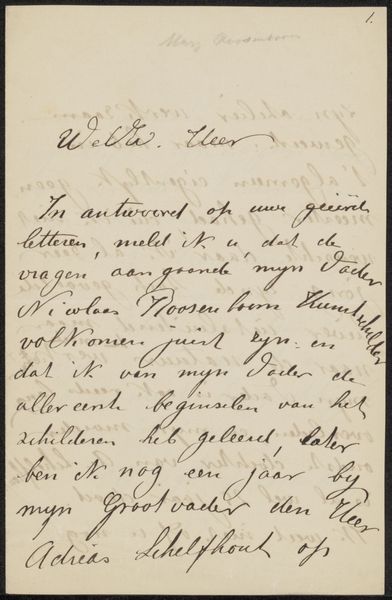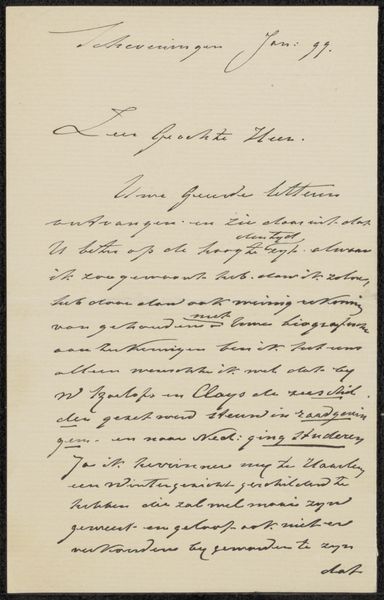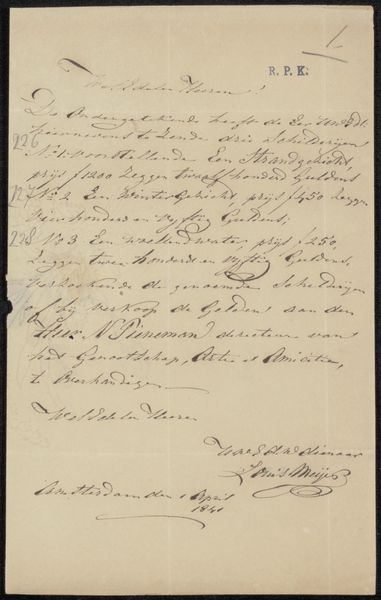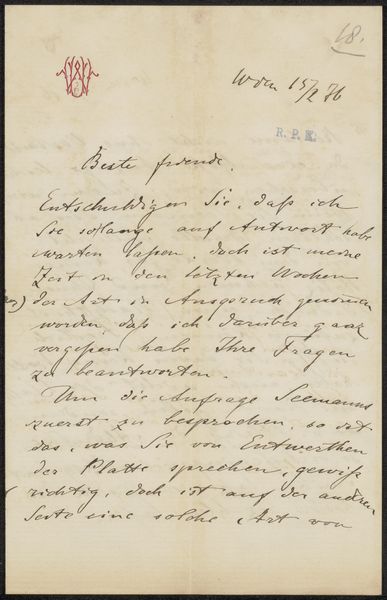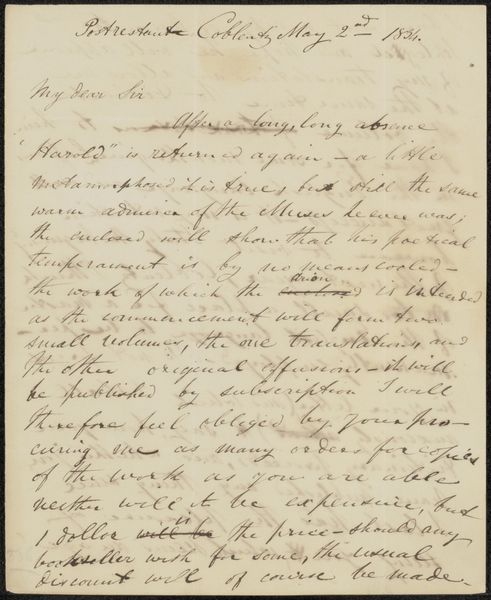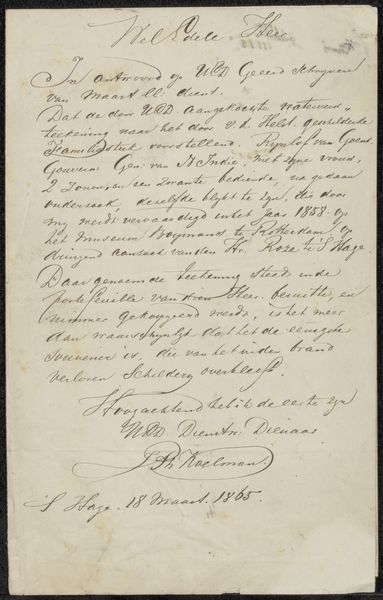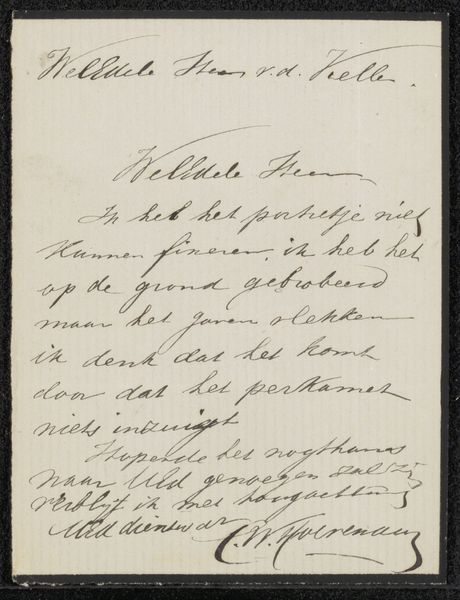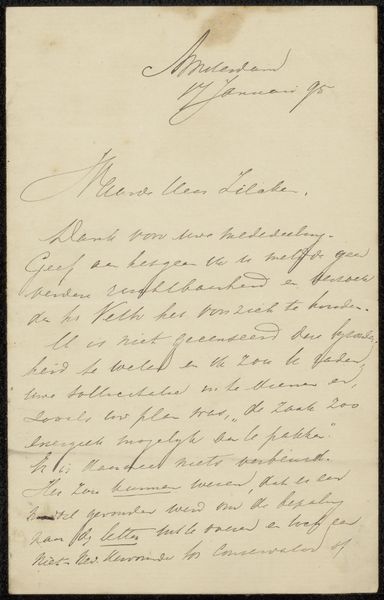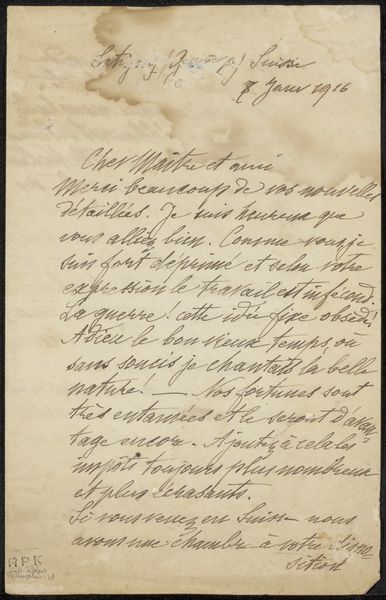
Copyright: Rijks Museum: Open Domain
Curator: We're looking at a work entitled "Brief aan Philip Zilcken" which translates to "Letter to Philip Zilcken." It's tentatively dated to 1885 and comes from the hand of Elbert Jan van Wisselingh. We see the usage of pen and ink on paper, along with a technique known as frottage and a beautiful execution of calligraphy. Editor: It strikes me as quite delicate, almost fragile. The faded ink and slightly rough edges of the paper give it a tangible sense of history. Curator: I think situating it in its time deepens our understanding. The late 19th century saw an explosion in letter writing, making handwritten correspondence a central form of communication. Considering class and gender, letters were very accessible to upper middle-class men of letters. What does the symbolism suggest to you? Editor: The most immediate symbol is that of written communication itself, a now largely obsolete means of contact. And I'm also intrigued by the letterhead—"St. Enoch Station Hotel, Glasgow." Hotels were potent symbols of travel, impermanence, and social interactions. This could speak to a certain transience in Wisselingh's life. Curator: That's an interesting interpretation! From a contemporary perspective, hotels sometimes suggest displacement, reflecting broader discussions on mobility and identity. The location suggests specific economic contexts relating to Scotland in that era, marked by rapid industrialization. The fact that this letter was specifically penned by someone who was not necessarily part of these economic systems offers an important contrast. Editor: Indeed. I see the swirling script as representative of the artist’s thoughts at the time of writing. What I perceive as freedom may be quite tightly constrained within specific codes of conduct and rhetoric, wouldn’t you say? Curator: Absolutely. The act of correspondence was subject to prescribed social norms and communication styles. This brings forth important perspectives when one reflects on notions of censorship and what happens when prescribed rhetorics are defied or reclaimed. Editor: For me, seeing handwritten letters prompts deep feelings of nostalgia. This particular example reveals both the universality of such artifacts and the cultural frameworks we should carefully interrogate as they come our way.
Comments
No comments
Be the first to comment and join the conversation on the ultimate creative platform.
